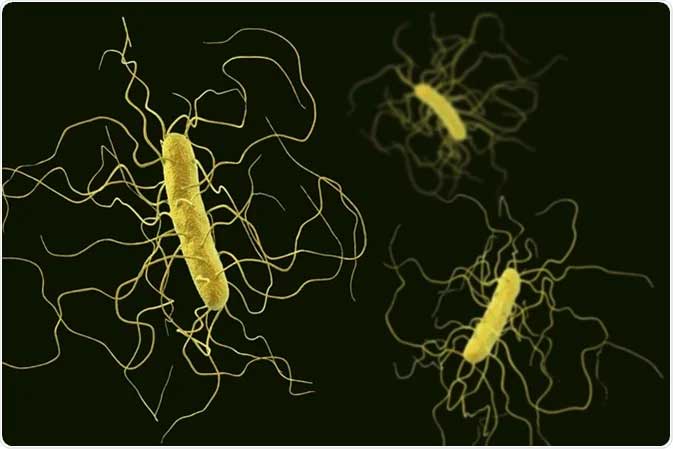Russians are urged to see a doctor if they detect symptoms of the Coxsackie virus. Immunologists reported that the Coxsackie virus, known as intestinal flu, causes high fever, muscle pain, vomiting and diarrhea. If they are detected, it is important to immediately see a doctor and get tested. The virus is transmitted through food, water and airborne droplets, and is especially common in the fall season when children return to school. Several schoolchildren and toddlers in kindergartens have previously contracted the virus.
Coxsackie – main symptoms, treatment and prevention
The Coxsackie virus is transmitted by the fecal-oral route, and can only be spread by humans. You can become infected through contaminated surfaces: food, water, and household items. Some types of the virus can also be transmitted by airborne droplets. Coxsackie cells remain alive for up to two months, remaining on the surface of vegetables and fruits, in water, and on household items. The virus is not destroyed by freezing or a 70 percent alcohol solution, but it quickly dies from ultraviolet light and boiling.
In rare cases, the virus is transmitted from mother to child during pregnancy or during passage through the birth canal. For pregnant women, the Coxsackie virus is extremely dangerous.
The disease can occur in an isolated form (with one single syndrome) or in a combined form with damage to several organs.
The incubation period is on average about 6 days. Coxsackie viruses cause diseases with various symptoms, but the most common (more than 90% of cases) are the following symptom complexes.
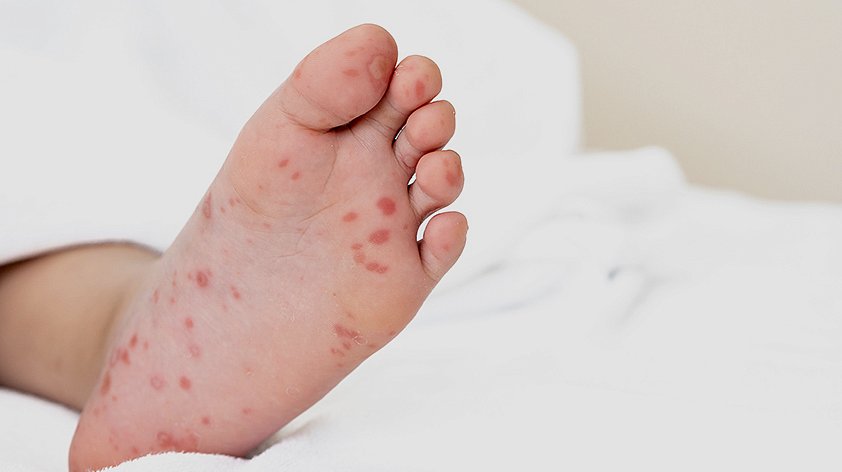
This syndrome is characterized by a small red rash, which is extremely painful watery blisters that are localized in the oral cavity, between the fingers and toes, on the palms and soles of the feet, less often on the back of the shins, thighs, buttocks. The area of the rash is itchy and flaky. Usually the fever subsides within 1-3 days, the rash goes away within 7-10 days.
Children and adolescents are most susceptible to the spread of the virus, and the risk group includes all visitors to kindergartens and schools.
Symptoms and signs
The average person will have the disease up to ten times during their lifetime. Half of those who become ill are asymptomatic, while others may experience the following symptoms:
– fever,
– sore throat,
– headache,
– spots and blisters on the inside of the cheeks, tongue, and gums,
– red, blister-like rash on the palms of the hands, feet, and buttocks,
– diarrhea,
– vomiting,
– chest and abdominal pain,
– fatigue, drowsiness, and irritability,
– loss of appetite.
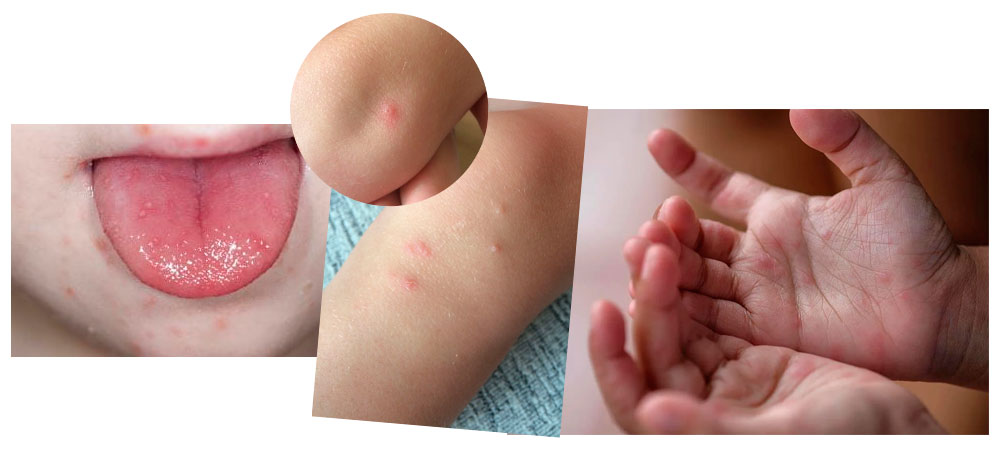
Rospotrebnadzor recommends that you consult a doctor if these symptoms appear.
As with all viral infections, there is no specific treatment, but symptoms can be controlled by:
– drinking more fluids,
– taking medications to reduce fever (after consulting a doctor),
– relieving pain with medications or compresses.
Prevention
– Maintain good hygiene: wash your hands with soap more often, especially after using the toilet and before eating, drink bottled and boiled water.
– Disinfect surfaces, especially those that the child comes into contact with.
– Avoid contact with infected children. Abundant shedding of the virus is observed during the first few days after infection, although in some cases it can persist for several months.
Why is the Coxsackie virus dangerous
? In rare cases, Coxsackie viruses can cause serious complications such as meningitis, encephalitis, and myocarditis.
Herpetic angina (not related to the herpes virus). The disease is characterized by a fever, sore throat, enlarged lymph nodes, and nasal congestion. Small fluid-filled blisters appear on the mucous membrane of the throat (on the anterior palatine arches, uvula, and soft palate), which burst after a few days to form painful erosions with a white coating. Most often, the rash subsides within 7–10 days, but sometimes it can persist for up to several weeks.
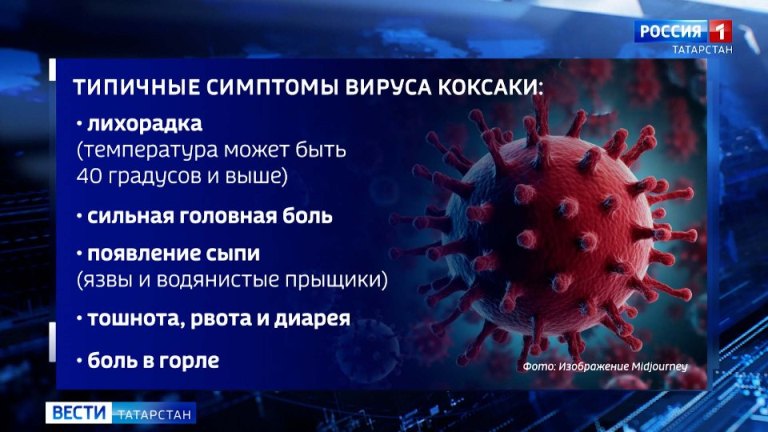
Hemorrhagic conjunctivitis. Accompanied by acute pain in the eyes, decreased visual acuity, a feeling of sand in the eyes, photophobia, swelling of the eyelids, profuse purulent discharge from the eyes. The difference from other eye infections, such as chlamydial, adenovirus, is the sudden onset and rapid recovery.
Epidemic myalgia (Bornholm syndrome, “devil flu”, or epidemic rheumatism). It begins acutely: the temperature rises to 39-40°C, in the first hours of the disease there are attacks of cramping pain in the upper abdomen and chest. The duration of the attack is 15-30 minutes.
Aseptic serous meningitis, encephalitis. Enteroviruses cause most serous meningitis in children and young people, the etiology of which can be determined. Meningitis develops acutely with symptoms such as febrile fever, photophobia, headache, vomiting, nausea. As the disease progresses, the meninges are affected. Enteroviral encephalitis occurs much less frequently. In this case, patients become increasingly sleepy, disorientated, have neurological deficits (for example, motor, sensory, speech), and sometimes convulsions and delirium are observed. The prognosis is favorable in most cases.
Intestinal form. Symptoms (diarrhea, acute abdominal pain) resemble a common intestinal infection, but in addition to these signs, runny nose, sore throat and other catarrhal symptoms are often present.
Poliomyelitis-like form. Paralysis develops rapidly, but damaged muscles recover fairly quickly. Other symptoms: rash and diarrhea. This form of the disease is common only among children.
Diagnosis of Coxsackie virus
Given the complexity of each form of the disease, as well as their similarity to other pathologies, it is extremely difficult to diagnose the disease at the initial examination. Diagnosis of the Coxsackie virus begins with an examination of the patient, collecting anamnesis, but the main role in making a diagnosis is given to the results of studies:
– detection of pathogen DNA in biological material (blood, saliva, nasal discharge, urine) by polymerase chain reaction (PCR);
– laboratory confirmation of enterovirus infection Coxsackie;
– detection of enterovirus antigen in feces;
– Coxsackie virus markers — immunoglobulins of class M (IgM) to Coxsackie viruses (antibodies of the acute period of the disease) and immunoglobulins of class G (IgG) — antibodies of the past disease. Immunoglobulins of class M are considered confirmation of the disease if their quantity exceeds normal values several times. The accuracy of such diagnostics is more than 90%;
– general blood test;
– general urine test
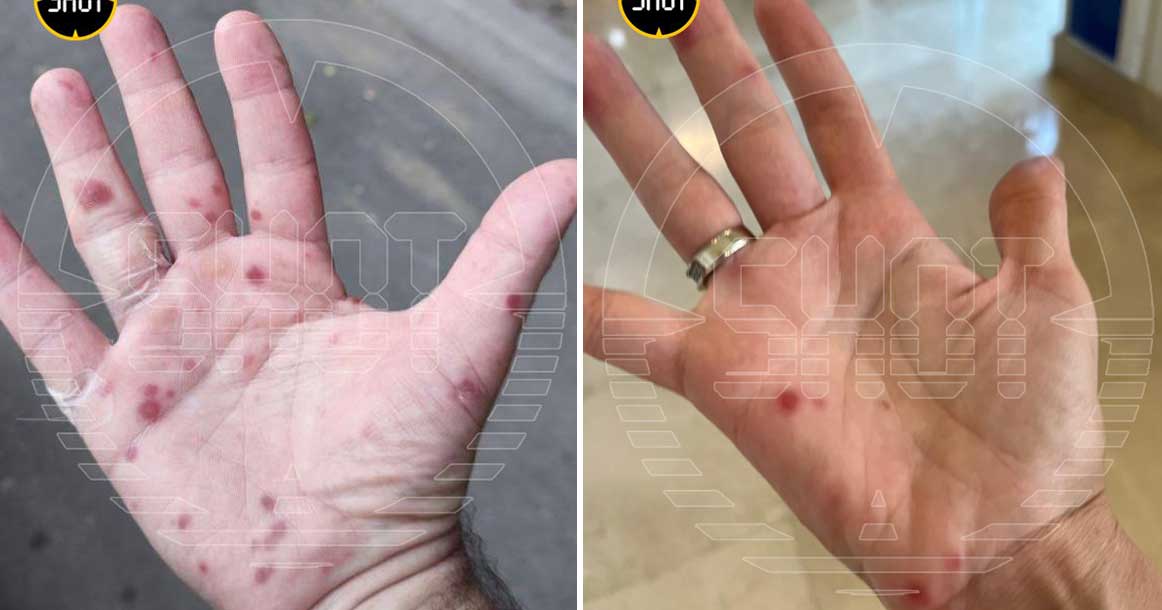
If necessary, the doctor may prescribe other research methods that will help exclude diseases such as rubella, polio, mumps, scarlet fever, scabies or eczema, etc.
If a child has one or more of the listed symptoms, it is necessary to immediately contact a pediatrician or pediatric infectious disease specialist. Adults should contact a therapist or general practitioner. If a disease is detected, the patient may be referred to other specialists: a cardiologist, neurologist, gastroenterologist, ophthalmologist, dermatologist.
Treatment of Coxsackie virus
There is no specific therapy for the infection caused by the Coxsackie virus. Therefore, treatment is symptomatic in nature in order to alleviate the patient’s condition.
Bed rest should be observed throughout the acute period of the disease.
Drug therapy is prescribed depending on the specific symptoms that accompany the disease. The main drugs used are:
– antipyretics;
– antihistamines;
– throat antiseptics;
– antiviral agents;
– antiemetics;
– sorbents for severe symptoms of intoxication;
– immunomodulators (interferons or immunoglobulins) to increase the activity of the immune system.
To relieve symptoms of dehydration, which are often seen with diarrhea and vomiting, you should drink plenty of fluids.
In case of severe dehydration, the drug Regidron is prescribed, which not only replenishes the volume of lost fluid, but also restores the balance of microelements in the body. Intravenous rehydration can be used if oral rehydration is impossible (severe dehydration, refusal to eat or drink). As a rule, this applies to children in the first year of life.
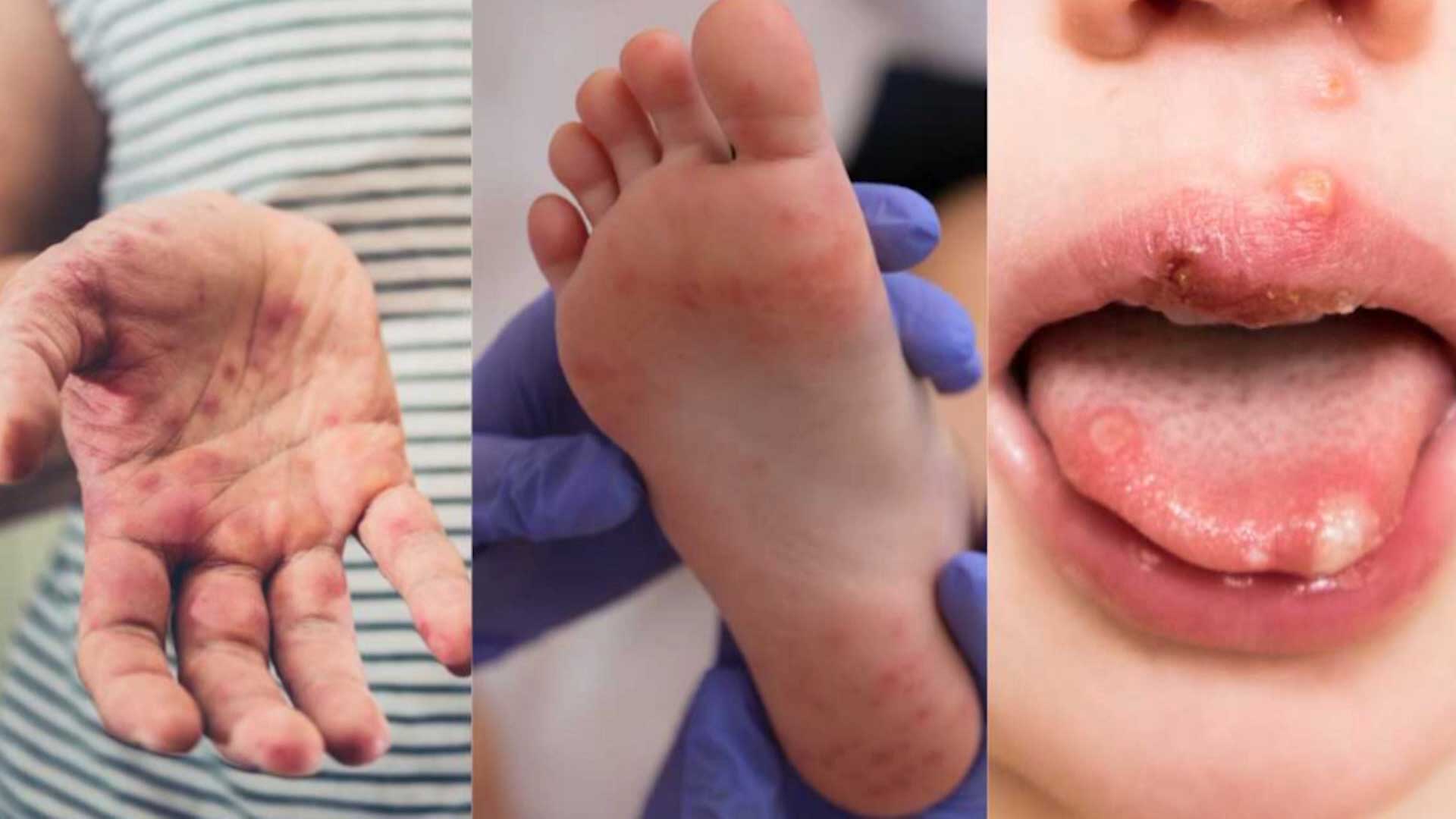
To reduce itching and relieve swelling, you can use pharmaceutical remedies for insect bites, soda baths for feet and hands, aloe or nettle juice in the form of lotions.
If a bacterial infection occurs, broad-spectrum antibacterial drugs are prescribed, although antibiotics against the Coxsackie virus itself (as well as against any other virus) are ineffective.
Some types of Coxsackie virus group B pose a danger
They can cause serious complications, including myocarditis, pericarditis, inflammation of the pancreas, liver, membranes of the heart, lungs, spinal cord and brain. Symptoms of complications requiring immediate medical attention:
– pronounced pallor of the skin;
– cyanosis (blue skin);
– stiff neck;
– refusal to eat for more than a day;
– severe dehydration, which can be detected by dry lips, lethargy, drowsiness, decreased urine output. In severe cases, dehydration can lead to – delirium and hallucinations;
– severe headache;
– fever and chills, as well as the inability to bring down the temperature within 2-3 days.
Fatal outcomes from Coxsackie virus are extremely rare and may be caused by the development of a severe central nervous system infection in newborns.
Coxsackie infection in pregnant women can cause congenital malformations of the cardiovascular, genitourinary and digestive systems in the fetus. When children are infected in the womb, sudden infant death syndrome is possible.
Main characteristics of Coxsackie
Coxsackie virus (lat. Coxsackievirus) is named after the American town of Coxsackie in New York State, where it was first isolated by researchers Gilbert Dalldorf and Grace Sickles in 1948-1949. Here it was first discovered in 1948 in children with symptoms resembling poliomyelitis. Coxsackie belongs to the picornavirus family (which also includes hepatitis A, rhinitis, and foot-and-mouth disease) and the genus of enteroviruses that live in the gastrointestinal tract of the host.
There are two types of Coxsackie viruses – A and B. Type A viruses infect the skin and mucous membranes, can cause conjunctivitis, stomatitis, upper respiratory tract diseases, throat, muscle pain and aseptic meningitis. Type B viruses affect the heart, lungs and liver, can cause pain in the chest and abdomen.
Some types of Coxsackie virus are characterized by rashes on the palms, soles, and mucous membranes of the mouth, known as hand, foot, and mouth disease (HFMD). However, HFMD symptoms are also characteristic of a number of other related viruses. Coxsackie, like all enteroviruses, reproduces in the gastrointestinal tract, and can provoke inflammation in any organ. However, enteroviruses rarely cause inflammation in the digestive system – as a rule, they move around the body with the blood and infect other organs. Most often, the virus affects the skin and mucous membranes on the palms, soles, and oropharynx – in this case, they speak of hand, foot, and mouth disease.
Less commonly, the virus causes inflammation in the heart muscle or the membranes of the brain.
Most infected people experience a relatively mild or even asymptomatic illness, but in some cases it can cause quite severe symptoms and complications. Young children, the elderly, and patients with chronic diseases that affect the immune system are particularly susceptible.
There are several ways of transmitting the Coxsackie virus: you can become infected either through direct contact with an infected person or through shared objects.
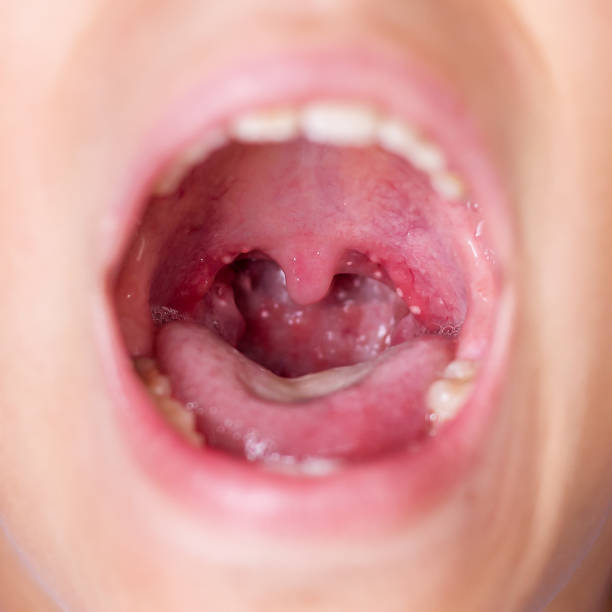
Ways of transmission of the Coxsackie virus:
– airborne – spread occurs through microscopic droplets released when coughing, sneezing, screaming;
– fecal-oral – the virus is transmitted through dirty hands and objects when personal hygiene is not observed, through poorly purified water;
– contact – infection is possible through contact with areas of skin and mucous membranes of another person affected by the virus.
Coxsackie virus is found all over the world. Epidemics are most often observed in countries with warm climates and high population density. The active spread of the virus in recent years is associated with the availability of international travel.
In Russia, cases of Coxsackie virus infection are registered annually. Mostly, children under 10 years of age seek medical help. They are more vulnerable to it due to the imperfection of the immune system and frequent contact with other children in kindergartens, schools, and playgrounds, where the virus spreads easily. This is explained by the fact that it is at this age that the disease occurs with more pronounced symptoms.
The greatest activity of the Coxsackie virus traditionally occurs in the summer and autumn months. In summer, the virus can more easily survive in the external environment, especially in humid and warm climates, which facilitates its spread through water and objects.
In autumn, especially towards the middle of the season, the risk of infection may increase due to a general decrease in immunity in people. In regions with a mild climate, such a risk may persist all year round, especially in countries with a high population density and in tourist regions.
However, adults can also get sick. They usually have a milder form of the infection than children, and are often accompanied by symptoms similar to a common cold: fever, sore throat. In older people and patients with weakened immunity, the virus can cause a severe course and dangerous complications (inflammation of the heart muscle, meninges).
Biological features of the Coxsackie virus
– high resistance in the external environment – the virus remains active outside the human body, especially in conditions of high humidity and moderate temperature. It can survive on contaminated surfaces, in stagnant water, in food and on household items, which increases the risk of transmission;
– the ability to attack a large number of organs – after entering the body, the virus multiplies in the mucous membranes of the gastrointestinal tract and spreads throughout the body through the blood, affecting various organs and systems;
– variability – the virus has 29 subtypes, so even a person who has recovered can become infected again.
High temperatures and humidity create favorable conditions for the virus to survive, including outside the human body. The situation is aggravated by the fact that the warm season coincides with the holiday season. People travel more often, spend more time near the water, eat fruits and vegetables, and do not always observe hygiene rules as carefully as at home.
Types and symptoms of Coxsackie virus. Herpangina, meningitis
There are 29 subtypes of Coxsackie virus. They are divided into two main groups – A and B. They differ in clinical manifestations, localization and severity of the course.
Coxsackie viruses of group A cause mainly damage to the skin and mucous membranes. Group A includes 23 serotypes. Skin and mucous membranes are affected, respiratory diseases, conjunctivitis, stomatitis may occur. Herpetic angina and the syndrome called “hands-foot-mouth” are considered characteristic, since the rash appears only on the palms, feet and around the mouth.
One of the most common manifestations of the infection is herpangina. It causes painful ulcers to appear on the oropharynx, the inflammation is accompanied by fever and severe pain in the throat. Herpangina is more common in preschool children.
Symptoms of herpangina:
– high temperature – can rise sharply to 39–40 °C and remain at this level for several days, often accompanied by chills and weakness;
– severe sore throat – gets worse when swallowing, especially difficult for small children;
– a rash on the mucous membrane of the throat and tonsils in the form of blisters filled with liquid. Subsequently, they open up, forming painful ulcers;
– salivation;
– refusal to eat due to sore throat;
– deterioration of general condition and mood;
– general symptoms of intoxication – headache, muscle and joint pain, weakness and fatigue.
Another common disease is hand, foot and mouth disease. It causes a sharp increase in body temperature and a sore throat, and after 2-3 days, characteristic rashes appear on the skin and mucous membranes.
Symptoms of hand, foot and mouth disease include:
– fever – body temperature rises to 38–39 °C and remains at this level for several days, often accompanied by general signs of malaise;
– a rash of small blisters on the arms and legs. They can be painful and itchy, sometimes causing discomfort when moving;
– sore throat – painful rashes may appear on the mucous membrane of the mouth;
– refusal to eat or drink due to a sore throat;
– general malaise – children often become irritable, lethargic and sleep poorly due to discomfort.
Coxsackie A virus can cause acute conjunctivitis. It is accompanied by inflammation of the mucous membrane of the eye, its redness, and lacrimation.
In more severe cases, Coxsackie A virus can also affect the nervous system, causing aseptic (i.e. non-bacterial) meningitis – inflammation of the meninges of the brain and spinal cord. It is accompanied by high body temperature, headache, nausea and stiffness of the neck muscles.
Symptoms of aseptic (non-bacterial) meningitis:
– headache that is not relieved by regular painkillers and intensifies with movement, bright light or loud sounds;
– high body temperature — rises to 39–40 °C, often accompanied by chills and muscle pain;
– nausea and vomiting — develop against the background of increased intracranial pressure and are not associated with food intake. Vomiting does not bring relief;
– photophobia and sensitivity to sounds — bright light and loud sounds intensify the symptoms;
– rigidity (tension) of the neck muscles — an attempt to tilt the head toward the chest causes pain;
– convulsions (in severe cases);
– general deterioration in condition — weakness, drowsiness, irritability.
Coxsackie viruses group B. Coxsackie viruses group B (6 serotypes) cause serious changes in the nervous tissue of the brain, heart, liver, pancreas, pleura. Heart infection can cause myocarditis, pericardial effusion, pericarditis.
Infections caused by group B Coxsackie viruses are usually more severe and affect internal organs and systems.
Epidemic myalgia is characterized by sudden attacks of severe muscle pain, primarily in the chest and upper abdomen. The disease is accompanied by high body temperature and weakness, symptoms can persist for several days.
Myocarditis (inflammation of the heart muscle) and pericarditis (inflammation of the lining of the heart) are potentially life-threatening diseases. They are accompanied by a crushing pain in the chest, shortness of breath, weakness. Newborns and young children are especially vulnerable – myocarditis often takes a severe course in them.
Like group A viruses, Coxsackie B viruses can cause aseptic meningitis (inflammation of the membranes of the brain) and encephalitis (inflammation of the brain). These diseases are accompanied by signs of intoxication, high body temperature and neurological symptoms – headache, photophobia, muscle rigidity.
Gastrointestinal tract (GIT) infections and general symptoms of intoxication may develop in some people infected with the Coxsackievirus group B. They are accompanied by vomiting, diarrhea and abdominal pain, as well as general weakness and fever.
Differences between Coxsackie virus, rubella and chickenpox
Diseases caused by Coxsackie, rubella and chickenpox viruses may have similar symptoms: skin rashes, fever, general malaise. However, they have different origins, rash patterns and possible complications.
With rubella, the rash looks like small pink spots that spread first to the face and neck, and then all over the body. They usually do not cause itching and disappear after a few days. Rubella is also characterized by enlarged lymph nodes, especially in the back of the head and neck. Body temperature usually rises slightly, does not exceed 38 °C, and the general condition of the patient remains relatively satisfactory. However, rubella is extremely dangerous for pregnant women: it can cause fetal developmental disorders.
With chickenpox, the rash begins with small red spots, which then turn into blisters with a clear liquid. When they burst, they become covered with crusts. The blisters appear in several stages, several at a time, and often cause severe itching. The rash covers the entire body, including the mucous membranes of the mouth. Scars may remain after healing. The temperature can rise to 39-40 ° C and last for several days, especially in young children. Possible complications of chickenpox include bacterial skin infections, pneumonia. At a later age, shingles may develop. This is explained by the fact that the virus remains in the body forever and can be reactivated.






